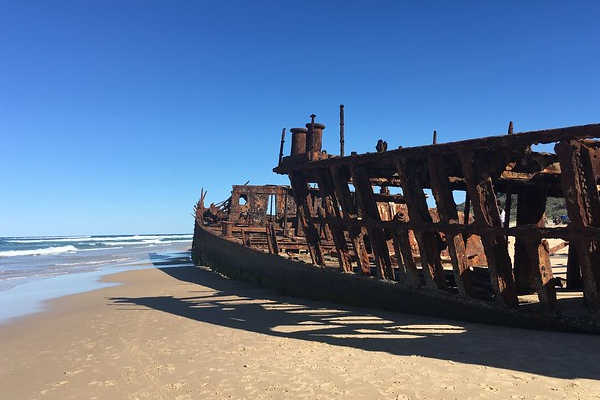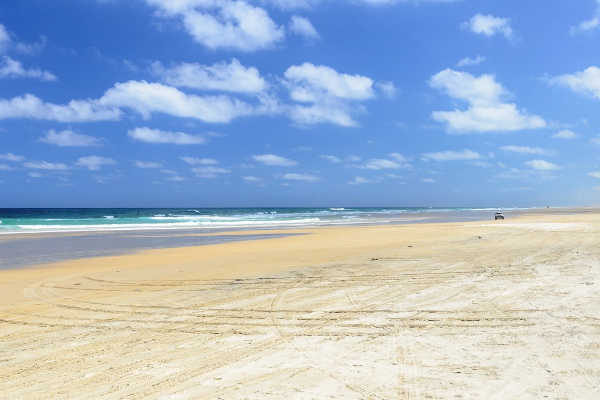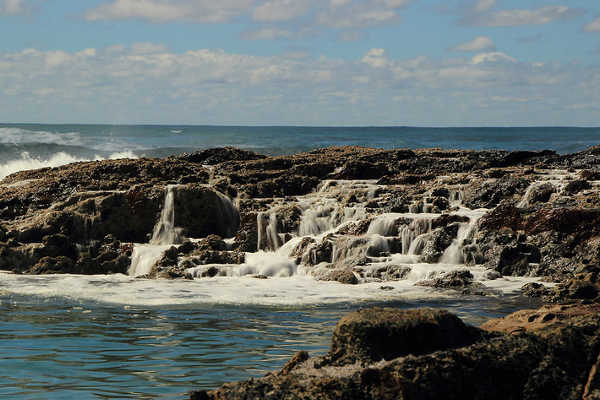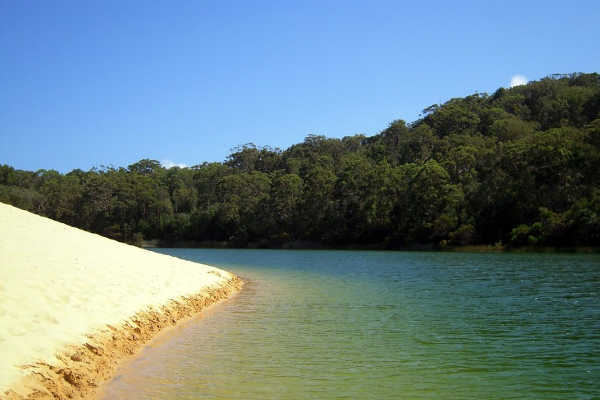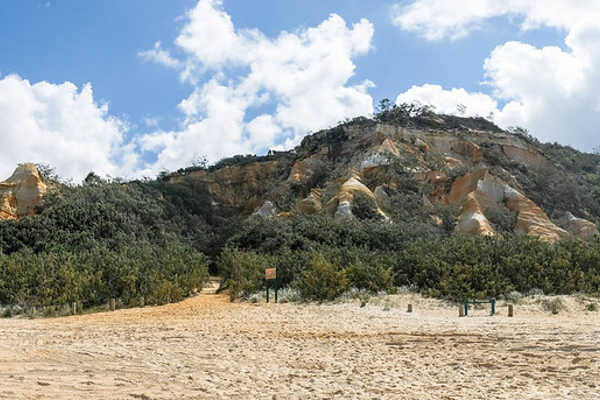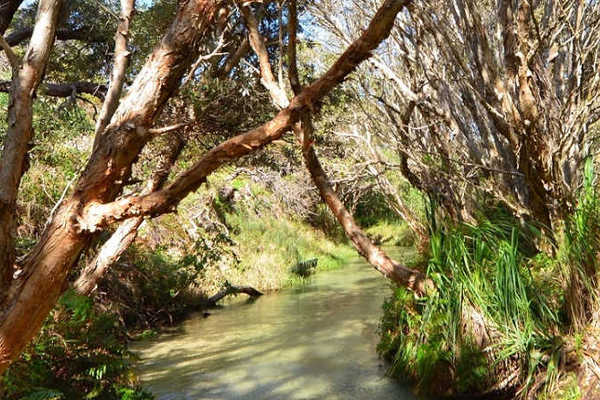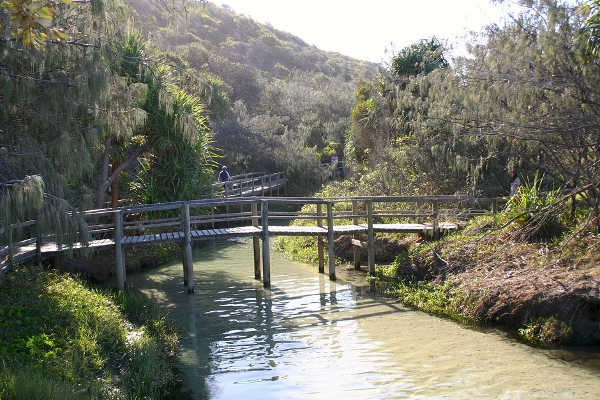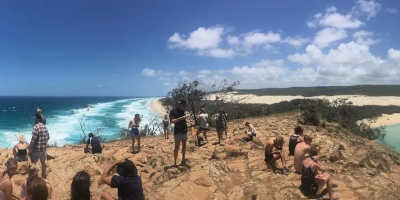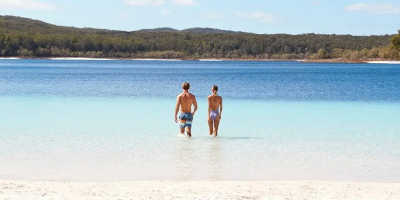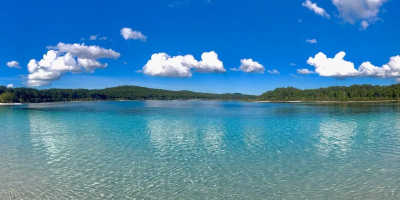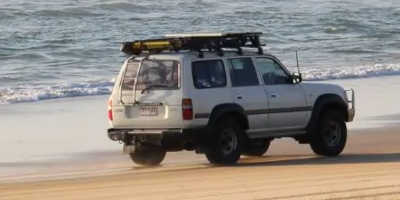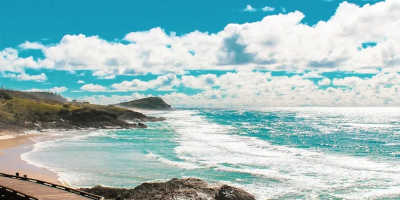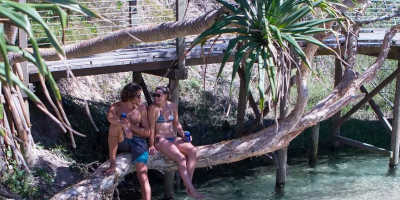Guide to Fraser Island
Named K’gari, meaning ‘paradise’ by the local Butchulla people, Fraser Island is truly an unworldly wonderland.
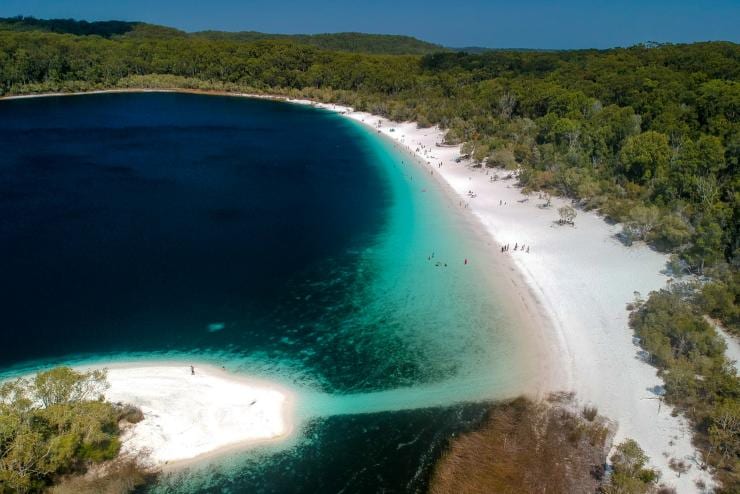
Spanning 123 kilometres down and 23 kilometres across, it is famed for being the largest sand island in the entire world. Bringing over 350,000 travellers each year, it’s no wonder Fraser Island is one of Australia’s number one destinations.
History of Fraser Island
-
The Formation
Fraser Island is estimated to be millions of years old, formed during the Earth’s Ice Age period. The formation of the island was completely due to the weather and waters of the region, with continuous years of wind, ocean currents, and waves pushing the deep siliceous sand from the far south-east coast of Australia to outer area of the ocean. The sand slowly formed large dunes, forming the large island shape we today. It is not the only sand island created by this method, but it is by far the most unique. Being the only sand island with a rainforest growing on it!
-
The History
Fraser Island has a long history with humans, being the original home to the Butchulla people, a particular aboriginal tribe found in the region. They lived in the sand for over 5,500 years, living in peace amid both the rainforest and the beach. European explorers sighted the land in 1770, but it wasn’t until 1836 when the island’s name changed to ‘Fraser Island’. Named after Captain James Fraser, who, along with his wife and crew, suffered a shipwreck to the north of the island. The captain, his wife Eliza Fraser, and many of the crew survived by swimming ashore to the island, sadly for Captain Fraser, he never did make it off the island. Interestingly, there are two stories of his death. Eliza Fraser stated that the Butchulla people murdered him, whereas a crew member stated that the captain’s death was from natural causes. To this day we still do not know the truth, but regardless, it has since been known as Fraser Island.
Things to see & do on Fraser Island
-
Lake McKenzie
Lake McKenzie, known as the healing lake of Fraser Island, notorious for soothing the aches and pains of visitors. The lake’s magical powers come from the surrounding bushland, which is all eucalyptus trees. The eucalyptus trees are known for having oil within their leaves, used for several body issues including swelling, redness, and even scarring. The surrounding tree’s leaves fall off the branches and land in the lake, with the oil seeping into the water, leaving behind the perfect natural spa treatment.
-
Maheno Shipwreck
For the history buffs travelling to Fraser Island, Maheno Shipwreck is for you! Nestled on the shore of one of Fraser Island’s beaches, it is easy to find, large rusting remains of a ship sunk deep into the sand. The ship was swept ashore in 1925 after a cyclone hit it, slowly decaying over the years until it is the skeleton ship we can see today. Seeing this ship during the sunset is an even better treat, as the rusting orange ship glows brilliantly in the sunset light, contrasting beautifully with the soft sand and pristine ocean.
-
75 Mile Beach
As you can probably guess from the name, this beach is 75-miles of pure sandy coast. It is by far the longest beach in Fraser Island, nestled on the spine of the island, it acts as a gateway to the area’s best attraction. One of the most popular activities on this beach is not swimming, however, but driving. Due to its long stretch of sand and wide space, tourist is allowed to take their four-wheel-drive this beach which doubles as a highway. Getting up to 80km, it can be a truly once in a lifetime experience, spraying sand and the seawater high above you as you swerve through the soaking sand.
-
Champagne Pools
Scattered along the ocean shore is a stunning collection of large rock pools. The name ‘champagne’ comes from the waves that crash onto the pool’s rocks, creating white foam bubbles that are similar to pouring a glass of champagne. The large rock pools are similar sizes to hot tubs or small swimming pools, perfect for families with children or those looking for a relaxing dip in the water.
-
Lake Wabby
Wear your bathers out on yet another swimming spot within Fraser Island. Lake Wabby offers exceptional dunes and lush bushland surrounding the deep green lake. The freshwater lake is jam-packed with incredible plant life and fishes, so keep your eyes peeled for the roaming creatures nearby your legs.
-
The Pinnacles
One of the key attractions of Fraser Island is the coloured sand cliffs of Fraser Island-the Pinnacles. Nestled on the eastern coast of Fraser Island, the pinnacles jut out along the sandy beachfront. Displaying a spectacular array of colours along the jagged rocks, due to the collection of minerals clay, and sand found in the famous cliffs. Visit here during the sunrise or sunset for a truly exceptional sight, as the orange and pink glow lights up the array of oranges, reds, yellows, and browns for one of the most marvellous sights on the Island. There is even a captivating Dreamtime story about this spot that can make the sight even more magical.
-
Govi Creek
Nestled on the eastern coastline of Fraser Island, the creek begins from Dilli Village and flows along into the Coral Sea of the South Pacific Ocean. It is one of the most unspoilt spots of Fraser Island, promising stunning scenery with native flora and fauna scattering the area. The entire creek is surrounded by large stretches of the bush, so you can even get lost in the native bushland during your visit. Make sure to bring along your bathers for this attraction, as there is no better activity then plunging into the pristine waters of the calming creek.
-
Eli Creek
Let yourself relax completely as the calming Eli creek pushes you down the weaving water bends. It is one of the best ways to travel within Fraser Island, as you simply need to dip in the waters at the centre of the island and sit back and relax as the river does all the work! Pushing you down the creek letting you see all the marvellous bushland before the creek eventually flows into the ocean. A lot of tourists bring floaties for this attraction, but you can simply use your body and lie back on the surface if you come unprepared.
-
The Sand Dunes
As Fraser Island is the largest sand island in the world, it, of course, has several incredible sand attractions, with the dunes being the best! Located behind the eastern beaches, the large dunes are the perfect place to enjoy an unworldly lookout point of the ocean, as well as discover the desert sand region of the island.
-
The Wildlife
One of the best attractions on the island is the large array of native Australian plants and animals found within it. As the only sand island with a complete rainforest growing on top of it, all the plants are unique and precious, with a range of exceptional species. The reason why the island can grow plants is all due to the particular fungi found in the sand. Usually sand is notoriously low in nutrients, leaving plants to wither in the sandy soil. However, the mycorrhizal fungi present in Fraser Island’s sand gives enough nutrients for plant growth, leading to an incredible rainforest amidst the island.
Animals are found throughout the island’s region, with mammals, reptiles, marine life, and more roaming about! One of the biggest draws to the island is the wild dingos roaming the area, which are the purest dingoes now found on Australia, all due to their separation to the mainland. Koalas are seen all through the trees, typically sleeping the day away in the highest branch they can find. For marine life, Tin Can Bay has a stack of local dolphins, with the optional activity of feeding them their dinner after sunset time.


